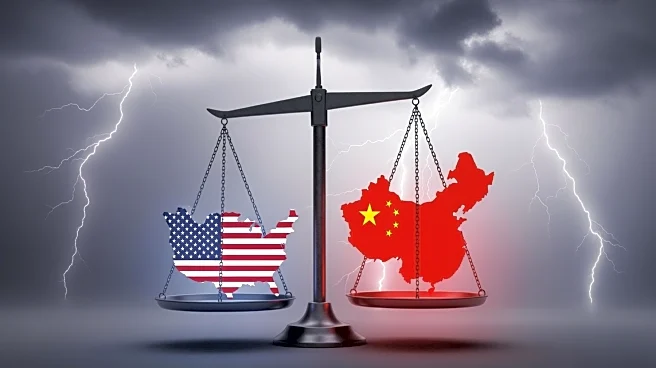What's Happening?
China's economic growth has decelerated in the third quarter of 2025, with the economy expanding by 4.8% compared to the same period in 2024. This marks the slowest growth rate in a year, as reported by China's National
Bureau of Statistics. The slowdown is attributed to ongoing issues in the property market and heightened trade tensions with the United States. Recently, China imposed stringent controls on the export of rare earth minerals, which are crucial for global electronics production. This move has disrupted the fragile trade truce with the U.S. and prompted a swift response from President Trump, who threatened to impose an additional 100% tariff on Chinese imports. The economic data comes ahead of a significant meeting of China's top leaders, who will discuss the country's economic strategy for the next five years.
Why It's Important?
The slowdown in China's economic growth and the renewed trade tensions with the U.S. have significant implications for global markets. Rare earth minerals are vital for the production of various electronic devices, and China's export controls could lead to supply chain disruptions and increased costs for manufacturers worldwide. The U.S. response, including potential tariffs, could further strain bilateral relations and impact global trade dynamics. Industries reliant on these minerals, such as electronics and automotive sectors, may face increased production costs, potentially leading to higher prices for consumers. Additionally, the economic slowdown in China could affect global economic growth, given China's role as a major economic powerhouse.
What's Next?
U.S. Treasury Secretary Scott Bessent is expected to meet with Chinese officials in Malaysia to discuss easing tensions and potentially arranging a meeting between President Trump and Chinese President Xi Jinping. The outcome of these discussions could influence future trade policies and economic relations between the two countries. Meanwhile, China's leadership will convene to outline the country's economic blueprint for 2026-2030, which may include strategies to mitigate the impact of trade tensions and bolster domestic growth.











